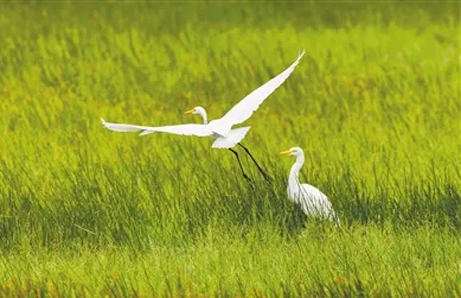Home> News
NPC deputy supports Zhanjiang's deep sea cage aquaculture
Ning Ling, a deputy to the 13th National People's Congress (NPC) and vice president of Zhanjiang-based Guangdong Ocean University, suggested the construction of a deep sea cage aquaculture industrial belt in Zhanjiang.
Located in the Leizhou Peninsula in the southern tip of the mainland, Zhanjiang is surrounded by the sea on three sides. It is rich in water and sea resources.
The city takes the lead in Guangdong province in the development of deep sea cage aquaculture. The province's first deep sea cage aquaculture industrial park in Zhanjiang started its construction in June 2010, promoting the large-scale development of deep sea cage aquaculture in the city.
To date, the number of cages for deep sea breeding in Zhanjiang has reached 3,200, accounting for over two-thirds of the province's total. Five core deep sea cage aquaculture bases have been formed in the city, mainly breeding golden pomfret, of which the city's production makes up 20 percent of the country's total.
"Construction of a deep sea cage aquaculture industrial belt in Zhanjiang is of great significance in the city's structural adjustment of marine fisheries, the safe and effective supply of aquatic and marine products, as well as the improvement of the fishery ecological environment and the livelihoods of fishermen," said Ning.
Ning also suggested that the deep sea cage aquaculture industrial belt be incorporated into the construction of national agricultural industrial parks to build Zhanjiang into a pilot demonstration zone for high-quality marine fishery development in the South China Sea, as well as an international exchange and cooperation center for countries along the Belt and Road.
Deep sea aquaculture is a high-tech, high-risk, and high-investment industry, said Ning. Therefore, the nation's relevant ministries and commissions should formulate preferential policies to support deep sea cage aquaculture, set up special support funds, as well as include it in the policy-supported agricultural insurance to reduce the risk of natural disasters for farmers.

 Print
Print Mail
Mail 5G construction supports Zhanjiang's high-quality development
5G construction supports Zhanjiang's high-quality development
 Acting mayor inspects project construction in Xuwen, Leizhou
Acting mayor inspects project construction in Xuwen, Leizhou Zhanjiang island an "egret paradise"
Zhanjiang island an "egret paradise"  Dancing egrets add vitality to Xiashan
Dancing egrets add vitality to Xiashan